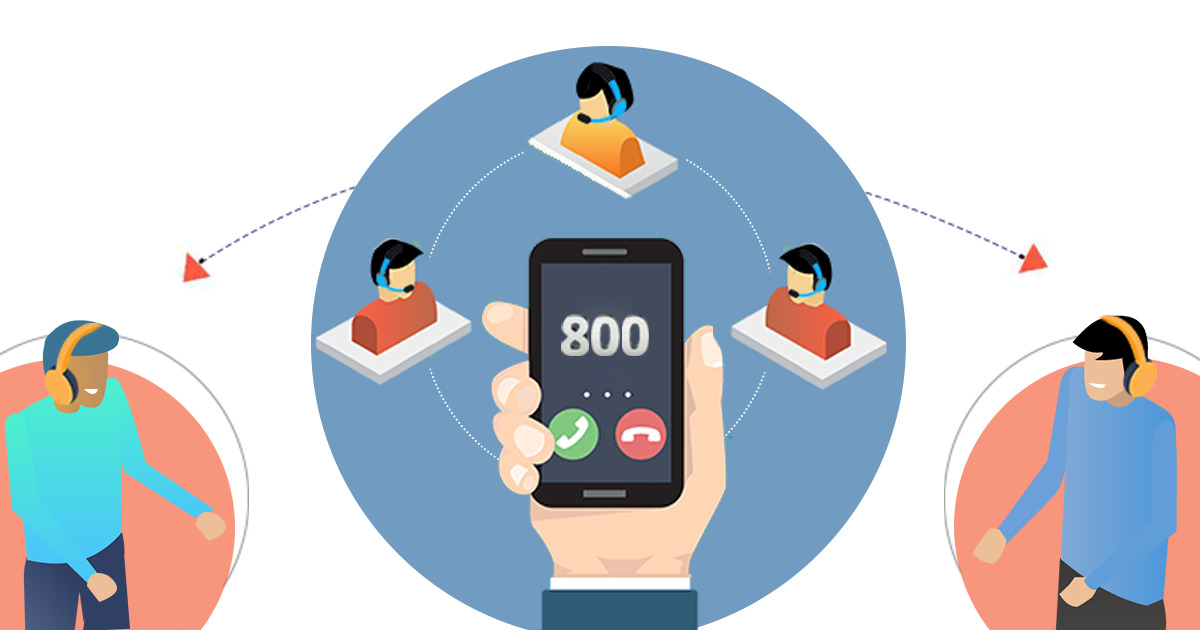In today’s fast-paced business world, accessibility and a professional image are paramount. Toll-free numbers offer a convenient and memorable way for customers to connect with your company. But what if your business operations are spread across different locations, or you have a remote workforce? This is where toll-free number forwarding comes in.
This article delves into the world of toll-free number forwarding, exploring its benefits, how it works, different forwarding options, and key considerations for businesses looking to implement this powerful communication tool.

Why Choose Toll-Free Numbers?
Toll-free numbers, recognizable by the 1-800, 1-855, 1-866, 1-877, or 1-888 prefixes, offer several advantages for businesses:
- Convenience for Customers:Toll-free numbers eliminate long-distance charges for callers, encouraging them to reach out without hesitation. This can significantly improve customer service accessibility and lead to higher customer satisfaction.
- Enhanced Brand Image:A toll-free number projects a professional and established image, fostering trust and credibility with potential and existing customers.
- Nationwide Reach:A single toll-free number allows callers from anywhere in the country (or designated region) to connect with your business, regardless of their location.
- Call Tracking and Analytics:Many toll-free number service providers offer call tracking features, allowing businesses to analyze call data, identify call sources, and track marketing campaign effectiveness.
Toll-Free Number Forwarding Explained: How Does it Work?
Toll-free number forwarding redirects incoming calls from your toll-free number to a predetermined destination, such as:
- Landline:Route calls to your office phone line or a specific extension for a dedicated representative.
- Mobile Phone:Forward calls directly to the mobile phones of your sales team, customer service representatives, or on-call technicians, ensuring responsiveness even when out of the office.
- Automatic Call Distribution (ACD):Distribute calls evenly among available agents in your call center, improving call handling efficiency and reducing wait times.
- Voicemail:Set up a professional voicemail greeting to capture messages when agents are unavailable, ensuring no call goes unanswered.
The forwarding destination can be configured to be based on various factors, such as time of day, day of the week, or caller location. This allows businesses to establish flexible call routing strategies that optimize call handling and customer experience.
Here’s a simplified breakdown of the process:
- Customer Dials Toll-Free Number:A customer dials your toll-free number.
- Call Routing:The call is routed to your toll-free service provider.
- Forwarding Activated:The toll-free service provider forwards the call to your pre-designated destination based on your chosen forwarding rules.
- Connection Established:The call connects with your chosen destination (landline, mobile phone, etc.).
Toll-Free Number Forwarding Options: Tailoring Your Strategy
Toll-free number forwarding offers a variety of options to customize your call routing strategy and cater to your specific business needs. Let’s explore some popular forwarding methods:
- Simultaneous Ring:Ring multiple phone lines simultaneously, ensuring a higher chance of reaching a live representative and minimizing customer wait times.
- Sequential Ring:Route calls to a predetermined sequence of phone lines, ensuring calls are answered in a specific order. This can be helpful for directing calls to designated departments or agents.
- Time-Based Routing:Forward calls to different destinations based on the time of day. For example, route calls to voicemail during non-business hours and to mobile phones of on-call staff after hours.
- Location-Based Routing:Forward calls to specific destinations based on the caller’s location. This can be beneficial for businesses with geographically dispersed teams or catering to a regional clientele.
These are just a few examples, and many toll-free service providers offer additional advanced routing features to create a comprehensive call forwarding strategy.
Benefits of Toll-Free Number Forwarding for Businesses
Toll-free number forwarding goes beyond basic call routing. It offers several key benefits for businesses:
- Increased Flexibility:Empower your team to work remotely or from different locations while maintaining a centralized point of contact for customers.
- Improved Customer Service:Ensure calls are always answered, even outside of regular business hours or when staff is unavailable, through intelligent forwarding to mobile phones or voicemail.
- Cost Savings:Reduce phone bills by eliminating the need for expensive long-distance lines for geographically dispersed teams.
- Scalability:Easily adapt your call routing strategy as your business grows by adding or removing forwarding destinations.
- Disaster Recovery:Maintain business continuity by forwarding calls to a backup location or team members in case of a natural disaster, power outage, or other disruptions at your primary location.
Toll-free number forwarding provides a robust communication solution that fosters better customer experiences, operational flexibility, and business resilience.
Choosing the Right Toll-Free Number Forwarding Service Provider
With numerous toll-free service providers available, here are some key factors to consider when making your choice:
- Features and Functionality:Ensure the provider offers the forwarding options and features that align with your business needs, such as simultaneous ring, time-based routing, and voicemail transcriptions.
- Pricing and Plans:Compare pricing models and choose a plan that fits your budget and call volume. Some providers offer bundled packages with additional features like call analytics and voicemail greetings.
- Reliability and Uptime:Choose a provider with a proven track record of reliability and high uptime to ensure your toll-free number remains accessible to customers at all times.
- Customer Support:Evaluate the quality of customer support offered by the provider. Opt for a provider with readily available and responsive support to address any technical issues or questions you might have.
- Security:Ensure the provider prioritizes data security and encrypts all call data to protect customer privacy.
By carefully considering these factors, you can choose a toll-free number forwarding service provider that empowers your business communication strategy.
Conclusion
Toll-free number forwarding is a valuable tool for businesses of all sizes. It offers a convenient and professional way to connect with customers, fosters operational flexibility for geographically dispersed teams, and ensures business continuity in the face of unforeseen circumstances. By understanding the benefits, functionalities, and key considerations, you can harness the power of toll-free number forwarding to enhance your customer interactions and achieve your business goals.
لا تعليق